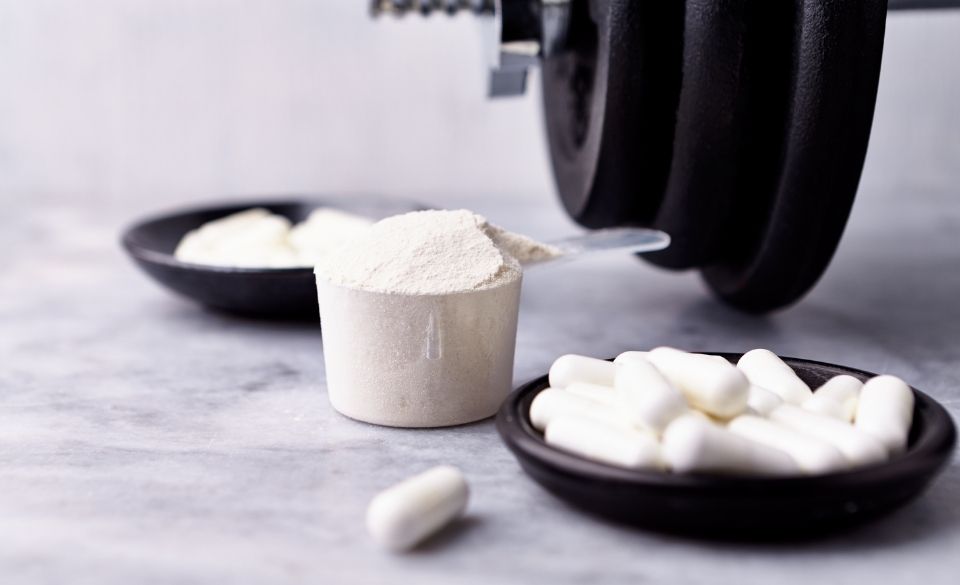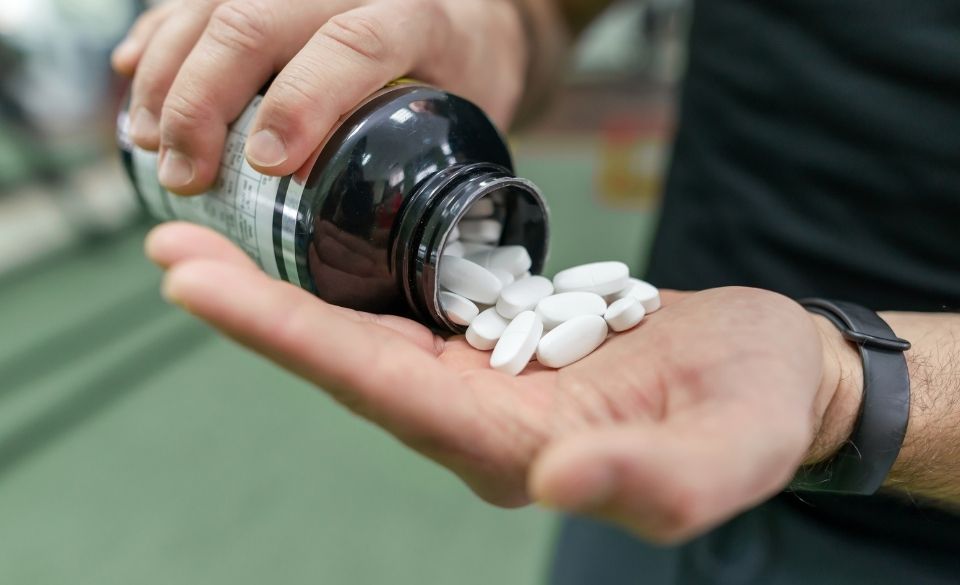
When To Take Creatine? Guide To Creatine Before & After Training
Page Contents
Even though creatine is often talked about in the gym, many people don’t know the benefits of it and what it can do.
Studies have shown that creatine can not only boost your strength but also increase your muscle mass and exercise performance.
However, many people believe that this type of supplement has adverse side effects and is unsafe.
In this article, we discuss when to take creatine, its health benefits, and how it can prevent neurological diseases.
If you are looking at ways to boost your performance, increase your muscle mass and protect yourself against neurological diseases, keep reading.
What Is Creatine?
Before we deep dive into this article, you need to first understand what creatine is.
Creatine is naturally found in our muscle cells and its main role is to help produce energy during high-intensity exercise. This can include lifting weights, running, and contact sports.
For many years it has been a substance used by athletes and bodybuilders to gain muscle mass, enhance strength and improve overall performance.
This supplement shares many similarities with amino acids. However, things like meat intake, exercise, muscle mass, and hormones can affect the amount of creatine stored in the body.
95% of the creatine stored in the body comes in the form of phosphocreatine, while the other 5% is found in the liver, kidney, and brain.
When you supplement with this, you increase the amount of phosphocreatine in the muscles, which is a form of stored energy within the cells. This helps your body to produce more high-energy molecules called ATP.
When the body has access to more ATP, the body can perform better during exercise. However, it can also increase muscle mass, strength and speed up recovery.
How Does Creatine Work?
Creatine helps improve health and exercise performance in numerous ways.
First, supplementing with creatine will allow you to do more work or volume during a single workout before fatigue sets in. This is a key factor in muscle growth and performance gains.
It also helps to improve satellite cell signalling. This helps to aid muscle repair and boost new muscle growth.
Another key element to using this supplement is the ability to rise hormones, such as IGF-1.
Creatine supplementation also helps to lift water from the muscle cells. Thus, causing a cell volumization effect, which can cause muscle growth.
Last but not least is the ability to increase muscle mass by reducing the amount of muscle breakdown. It also helps to lower myostatin levels. Which helps to reduce levels of the protein myostatin which may prevent new muscle growth.
Some studies have also shown to increase the amount of phosphocreatine in the brain. This has been known to improve brain health and neurological disease.
When to Take Creatine?
Research has shown that taking creatine can help you gain 0.9kg–2.2 kg (2-5lbs) of muscle mass when taken over a period of several months.
So, when should you take creatine?
To gain the above benefits it is recommended to take creatine 30 minutes before a workout for the best results.
However, to help speed up your recovery it is also recommended that you take it after a workout. Doing so can help to build and repair the muscles from intense workouts much faster.
Max effort and explosive sports like bodybuilding, weightlifting and sprinting can benefit greatly from the use of creatine. Other more endurance-based sports such as running, rugby, soccer, skiing, and tennis have also been shown to benefit from the use of it too.

When Should I Take Creatine For Best Results?
To get the best results from creatine, when should you take creatine for best results, and how much should you take?
The recommended dosage is 5g, or 0.3g/kg body weight 3-4 times a day for five to seven days. This should be taken 30 minutes before your workout, directly after your workout, and in the evening.
Once you have finished your first cycle of creating, you should reduce the daily dosage to 3-10 grams per day. This is enough to maintain the desired effects. However, after some time, the dosage will need to be increased again.
Creatine Before or After Training?
To get the best results from supplementing, should you take creatine before or after training?
Studies have shown that taking creatine before and after training will help increase muscle mass, reduce recovery time and promote muscle repair.
The dosage will vary between people and through trial and error. So it is important to follow the above recommendations before adjusting the daily dosage (5g, or 0.3g/kg body weight 3-4 times a day) for desired effects.
However, it is important to know that taking too much can have adverse side effects. Some of these effects can be:
– Damage to the kidneys
– Liver damage
– Stomach bloating
– Increase water weight
– Weight gain
– Muscle cramps
– Digestive problems
Most of the above side effects are usually on the severe side though, which is usually caused by overdosing.
Should I Take Creatine?
If you are looking for performance gains, increased muscle mass, and faster recovery, creatine can be beneficial to you. However, using this supplement when your an endurance athlete can have adverse side effects, like weight gain, cramping, and bloating.
So, if weight gain affects your power to weight ratio, or adds too much muscle mass it can ultimately reduce your athletic performance. If you are unsure if creatine can be beneficial to you, speak to your health professional, athletic coach, or doctor. They can help recommend if this supplement is right for you.



